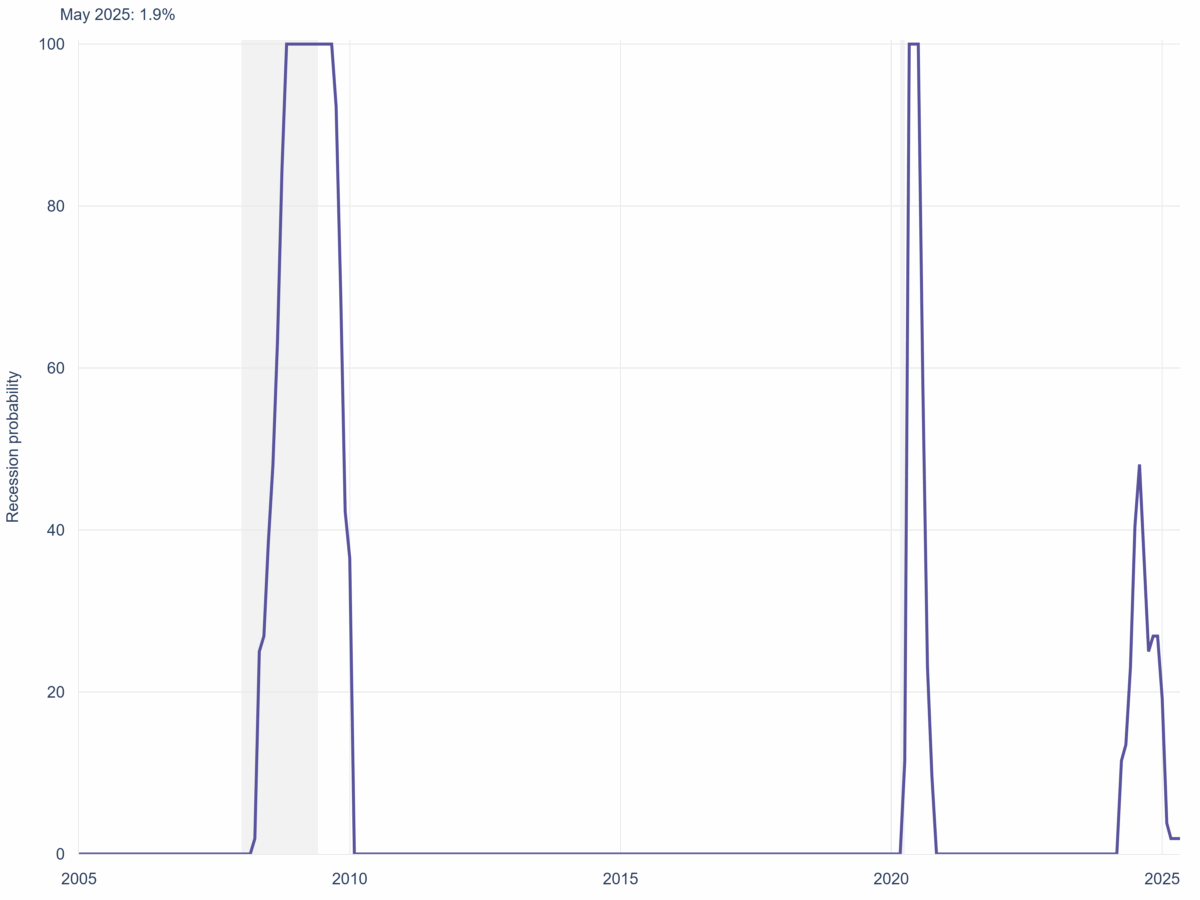As noted in this post, the indicator detected a recession in March 2024. It stayed above the threshold thereafter, so the implication is that we are currently the same recession. However, since then, the indicator has decreased substantially, so the recession probability is low.
From the website:
- The recession probability is computed from the dual-threshold extension of the Michez rule. The recession probability is the fraction of the 0.29pp–0.81pp band that the recession indicator has covered:
(indicator
0.29)
(0.81
0.29).
- Interpretation: The dual-threshold Michez rule works as follows: values of the indicator between 0.29pp and 0.81pp signal a probable recession; values above 0.81pp signal a certain recession. This dual-threshold extension accounts for uncertainty in the true recession threshold and provides a simple way to nowcast recession risk.
The indicator and probability estimates are now reported on an automated dashboard maintained by the authors.


At first I was tempted to just write this off as “yet another failed recession indicator,” but that may not be the case.
First, YOY employment has only risen 1.1%. Typically in the past that has almost always only occurred during recessions.
But I think you have to adjust for the increase in population. Working age population would be the best metric, but the Household Survey’s annual adjustments create unreliable jumps, so the Census Bureau’s total population metric is better.
In the past year, YoY population growth was 1.0%, slowly tailing off to 0.6%. Nonfarm payrolls have grown more than that.
BUT, the QCEW has indicated that actual job growth was under 1.0% (generally 0.8%) all through the second half of 2024. If those preliminary numbers don’t get revised away, that will subtract about 0.5% from YoY payroll growth, making it less than population growth.
And that would strongly suggest that at least the employment component is consistent with a recession since last summer.
Off topic, since Menzie and NDd have said what needs to be said about recession risk – the science of drought:
https://theconversation.com/the-atmosphere-is-getting-thirstier-and-its-making-droughts-worse-new-study-258022
The authors look at atmospheric evaporative demand as a cause of drought. AED is a measurement of the amount of water drawn out of soil as a result of air temperature, wind, solar radiation and humidity. The authors find that AED accounts for 40% of the increase in drought severity since 1981.
While we probably can’t directly attribute all 40% to human-caused climate change, we do know that the atmoshperic warming that drives climate change is the major cause of higher air temperature, wind speeds and humidity. Cloud reflection of sunlight back out of the atmoshere is also affected by atmospheric warming.
It has been pretty obvious that increased drought is a part of human-caused climate change. This study refines our knowledge of the mechanism. Sure would be nice if somebody would do something about climate change.